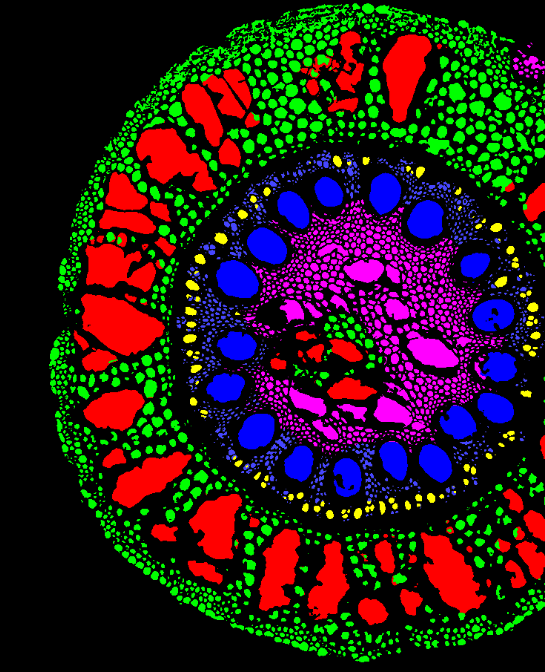We identify nodal root phenotypes that improve growth of maize under suboptimal nitrogen availability

anatomy of maize nodal root from LAT
Authors
Hannah M. Schneider, Jennifer T. Yang, Kathleen M. Brown, Jonathan P. Lynch
Source
Plant Direct 2021 https://doi.org/10.1002/pld3.310
Download options
Abstract
Under nitrogen limitation, plants increase resource allocation to root growth relative to shoot growth. The utility of various root architectural and anatomical phenotypes for nitrogen acquisition are not well understood. Nodal root number and root cross-sectional area were evaluated in maize in field and greenhouse environments. Nodal root number and root cross-sectional area were inversely correlated under both high and low nitrogen conditions. Attenuated emergence of root nodes, as opposed to differences in the number of axial roots per node, was associated with substantially reduced root number. Greater root cross-sectional area was associated with a greater stele area and number of cortical cell files. Genotypes that produced few, thick nodal roots rather than many, thin nodal roots had deeper rooting and better shoot growth in low nitrogen environments. Fewer nodal roots offset the respiratory and nitrogen costs of thicker diameter roots, since total nodal root respiration and nitrogen content was similar for genotypes with many, thin and few, thick nodal roots. We propose that few, thick nodal roots may enable greater capture of deep soil nitrogen and improve plant performance under nitrogen stress. The interaction between an architectural and anatomical trait may be an important strategy for nitrogen acquisition. Understanding trait interactions among different root nodes has important implications in for improving crop nutrient uptake and stress tolerance.

